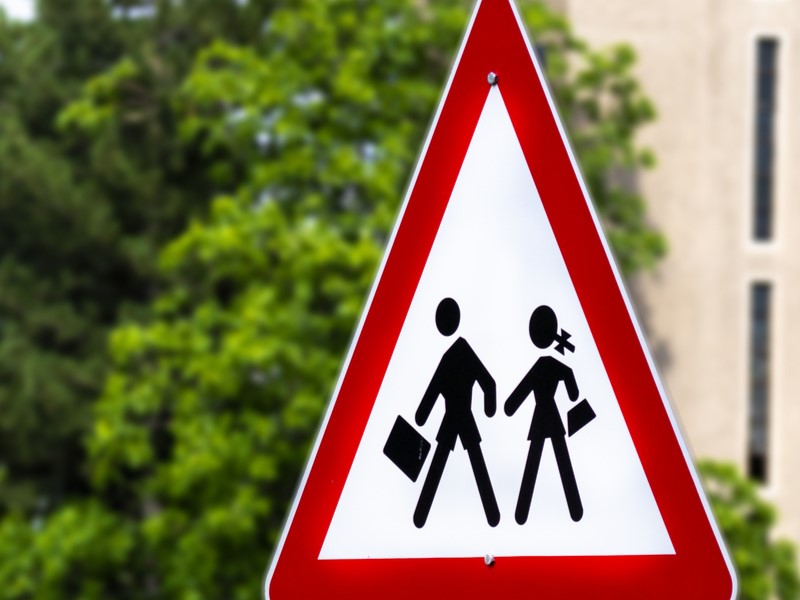How speed impacts pedestrian injuries in school zones

As summer winds down, drivers need to prepare for the back-to-school season. Brokers and insurers, meanwhile, need to familiarize clients with the risks they’ll face as a new school year starts.
Drivers will once again be dropping off and picking up kids from school. They’ll be sharing the road with school buses, and seeing a lot more pedestrian traffic as students and parents walk to and from school. And, most importantly, school-zone speed limits will be back in full effect.
Speeding in a school zone can lead to substantial fines and demerit points. Drivers in Ontario can see fines ranging from $95 to $595 and up to four demerit points. Plus, injuries affect auto insurance policies, both on the liability side, and on the accident benefits side.
But beyond the damage to drivers’ wallets, records and insurance policy rates, speeding in school zones can lead to serious harm for pedestrians, especially children.
And so safety of Which begs the question, why and how are school zone speed limits determined? And what’s the science behind those speed limit numbers?
A pedestrian hit by a vehicle can experience the impact in several different ways.
They might experience what’s called a ‘wrap trajectory,’ where they wrap onto the hood of the car before sliding off. Or they could experience a ‘forward projection’ in which the pedestrian is pushed forward by the vehicle. It all depends on the pedestrian’s height and the type of vehicle.
For example, if a pedestrian’s centre of gravity (usually located around the belly button) is above the front edge of the vehicle, they’ll experience a wrap trajectory. If it’s below the front edge of the vehicle, they’ll be pushed forward.
This is why smaller children are often hit directly at the head, thorax or abdomen, while older teens and adults are more likely to be hit at their lower extremities.
Why Speed Matters
Research shows collisions with pedestrians are rare on roads with speed limits of 40 km/h or lower. Only about 15% of all vehicle-pedestrian collisions involving children aged 0 to 15 years happen on these roads.
However, this rate jumps to between 72% and 81% on roads with a 50 km/h speed limit, according to a Swedish study ‘Is 30 km/h a ‘safe’ speed?’
Posted speed limits don’t always match the actual impact speed, since drivers might be speeding or applying the brakes. And the lower frequency of collisions on 30 km/h and 40 km/h roads suggests that vehicles travelling around those speeds are able to stop or slow down more quickly, the Swedish study found. That reduces the risk of collision.
On residential streets, the most common type of pedestrian collision involves a child running out in front of a moving vehicle. In the case of these dart-out accidents, the driver has little time to react.
If collisions take place at speeds below 30 km/h, research shows they’ll result primarily in slight injuries for children aged 0 to 14 years. But a U.S. study, ‘Relating severity of pedestrian injury to impact speed in vehicle-pedestrian crashes,’ found that for collisions at speeds above 40 km/h, serious injuries, including those leading to hospitalization, are more likely to occur.
Impact breakdowns
At impact speeds of 30 km/h, there’s about a 25% risk a child will sustain a serious injury; there’s a 75% chance the injuries will be slight.
When the impact speed is 40 km/h, there’s about a 50/50 chance the child will sustain either serious or slight injuries.
But if the vehicle’s speed reaches 50 km/h, the risk of serious injury jumps to around 75%, and there’s even a chance of fatal injuries.
The rising risk of severe injuries based on a driver’s speed is the reason why speed limits of 30 km/h or 40 km/h are typically enforced in school zones. They help protect child pedestrians.
Surprisingly, regardless of the reduced speed limit in these areas, a 2019 CAA poll found 70% of Canadians had witnessed speeding in school zones. What’s more, a U.S. National Institutes of Health study noted a staggering 50% to 90% of motorists still drive above the speed limit in school zones, increasing the risk to children.
Brittany Sinclair is a senior associate in biomechanics and personal injury at 30 Forensic Engineering’s Ottawa offices. Feature image courtesy of iStock/by sonmez







